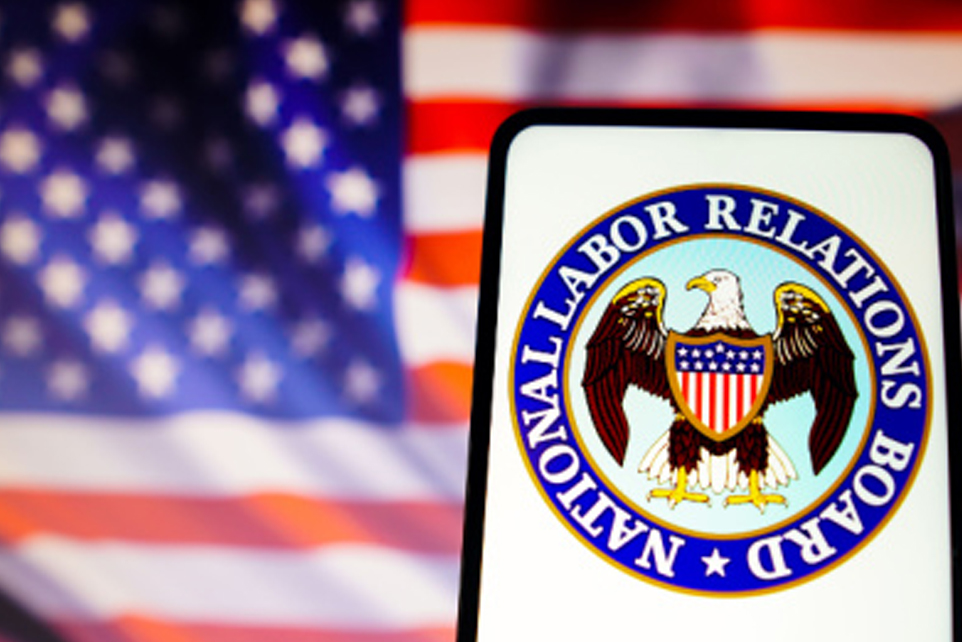In November 2024, the National Labor Relations Board (NLRB) upended 76 years of precedent, holding in Amazon.com Services LLC, 373 NLRB No. 136, that “captive-audience” meetings are per se unlawful under the National Labor Relations Act (NLRA).
Captive-audience meetings are mandatory meetings during regular, paid working time where an employer shares its views regarding unionization with employees. Employers have lawfully used captive-audience meetings in response to union organizing campaigns since at least the 1940s. But now the NLRB has determined that the mere act of an employer requiring an employee to attend a paid meeting where it expresses its views unlawfully interferes with the employees’ rights under Section 7 of the NLRA.
Reversal of Long-Standing Precedent
For decades, employers have exercised their First Amendment rights and provided truthful information about unionization through captive-audience meetings before their employees decided in a secret-ballot election whether to be represented by a union. These meetings were highly regulated by NLRB case law: Among other things, employers were prohibited from threatening, interrogating, or making promises to employees.
The NLRB now says that captive-audience meetings are “an extraordinary exercise and demonstration of employer power over employees” and has deemed them unlawful because they have a “reasonable tendency” to interfere with employees’ exercise of their Section 7 rights. While both the NLRA and the First Amendment protect an employer’s right to express its views about unionization, the NLRB stated emphatically that employers cannot compel employees to listen to their views about unionization, even if the employees are paid to do so (at a meeting held during working time).
In short, going forward, an employer will violate the NLRA if it requires its employees to attend a meeting where the employer shares its First Amendment-protected, NLRA-protected, lawful views on unionization.
“Clear Guidance” for Employer Safe Harbor
The NLRB also created a “safe harbor” for employers to hold voluntary meetings to express their views on unionization in the workplace on work time and provided what it called “clear guidance” on how to do so without engaging in unlawful conduct. For a meeting to be permissible, employers must provide reasonable notice and assurance that: (1) the employer intends to express its views on unionization at a meeting at which attendance is voluntary; (2) employees will not be subject to discipline, discharge, or other adverse consequences for failing to attend the meeting or for leaving the meeting; and (3) the employer will not keep records of which employees attend, fail to attend, or leave the meeting.
Important: Placing a voluntary meeting on employees’ work schedules will be treated as unlawfully compelling attendance. Employers that choose to hold voluntary meetings to share views on unionization must not place these meetings on employees’ work schedules.
The boundaries of this “clear guidance” will be left to litigation, and employers should be mindful of its ambiguities. For instance, would requiring an employee to work if they choose not to attend a voluntary meeting subject them to an “adverse consequence”? Would sending an electronic meeting invitation to an employee also be treated as compelling attendance? These questions, and others, remain to be answered. Thus, while voluntary meetings are still useful tools, employers must carefully weigh their pros and cons and take extra caution to remain within the safe-harbor parameters.
Outlook Moving Forward
Amazon likely doesn’t change much for employers who have faced recent union-organizing efforts. NLRB General Counsel Jennifer Abruzzo has targeted captive-audience meetings for years, and many companies have adjusted their communication strategies accordingly.
It is also possible, even probable, that Amazon will be overturned in relatively short order by a new NLRB with a Republican majority, but employers should consider its ramifications. Until the Supreme Court decides the lawfulness of captive-audience meetings, this area of labor law—like so many others—will be in flux as NLRB majorities change.
Finally, while Amazon is noteworthy, it is far from the only significant change the NLRB has made regarding what employers can and cannot do in the face of a unionization effort, even in the last month. As always, employers who proactively identify and acknowledge workplace challenges have the best chance of maintaining a direct working relationship with their employees without third-party involvement from a union.
Patrick Busch is an associate at Stinson’s Minneapolis office; he may be reached at patrick.busch@stinson.com.
Grant Mulkey is of counsel at Stinson’s Kansas City office; he may be reached at grant.mulkey@stinson.com.
Matt Tews is a Partner at Stinson’s Minneapolis office; he may be reached at matthew.tews@stinson.com.

